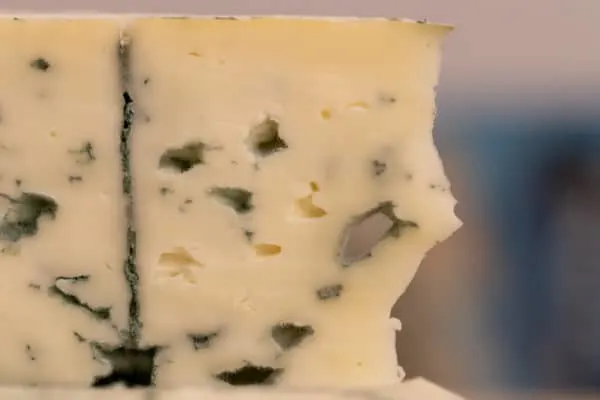Let’s talk about the storage, shelf life, and spoilage of blue cheese.
Just opened a blue cheese package, and need to know how long does blue cheese last?
Or maybe yours has been in the fridge for more than a couple of days, and you’re wondering if it’s still okay to eat. How to tell if blue cheese is bad?
Sound familiar?
If so, read on.

How Long Does Blue Cheese Last?
An unopened blue cheese lasts for about a week to two weeks beyond the date printed on the label. After opening, it retains best quality for about 7 to 10 days, but might keep for longer if it’s not nearing its date and you keep it well wrapped.
Blue cheese usually comes with a shelf life of a couple of weeks, but some creameries sell theirs with a more extended storage period, up to even six months. Those are in the minority, though.
After opening the cheese, it should taste best for a week or perhaps a bit longer. But if it’s a reasonably fresh cheese block, and its use-by date is still a couple of weeks away, you might get up to two weeks of good quality.
So in terms of shelf life, blue cheese is somewhere in between fresh cheeses such as ricotta, and long-lasting aged cheeses like parmesan.
Some creameries even say their blue cheese keeps for up to 4 weeks after opening, but that’s definitely not the norm. Read the label to learn what’s the storage period for yours.
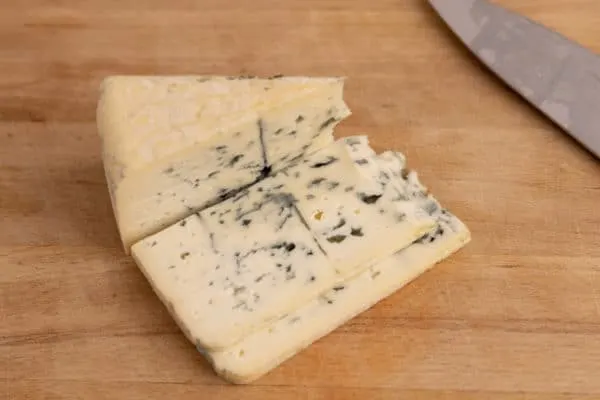
Of course, how long your blue will keep also depends on how well you store it. If it gets a bit of ventilation but not so much that it dries out quickly, it’ll retain quality for longer.
(I cover storage practices in detail later in the article.)
Finally, if the mentioned periods are too short for your needs, or you went bonkers on a sale and have way too much blue for your needs, freezing is an option.
The thing about freezing blue cheese is that it becomes more crumbly and loses some of its taste after thawing. Because of that, it’s best to use defrosted blue cheese only in cooked dishes, like casseroles, stews, and the like.

How to Tell if Blue Cheese Is Bad?
Discard blue cheese if:
- It’s moldy, and it’s not the blue mold you’d expect. Generally, blue cheese is moldy by design with an edible mold of Penicillium. But it’s not good if it starts growing on the surface mold that’s not native to the cheese. An example might be fuzzy grey mold growing on the surface. If there’s only a bit of unintentional mold and you’re sure it hasn’t spread to the interior, you can scrape it and use the remaining cheese. But if you’re not quite sure, err on the side of caution.
- The creamy part has changed color. Blue cheese is no longer safe to eat if it has turned pink, brown, or yellow. Please note that not all blue cheeses look the same, and in certain cases, discolorations are okay. For instance, here’s a cheese that has a pink hue near the rind, and that’s fine and expected. Read the label or the FAQ section on the brand’s website to make sure.
- It has started to smell like ammonia or has a strong off smell. This one is self-explanatory, but remember that some cheeses are naturally stinky. If there’s only a mild off-odor and you’re not sure how the cheese is supposed to smell, you can taste it and then decide if it’s any good.
- It’s texture or taste is bad. If your blue cheese becomes too dry or hard, it’s still safe to use, but you should probably toss it for quality reasons. The same is true if its taste is too strong due to prolonged storage.
Those are the typical signs of spoiled blue cheese.
Please note that there’s a lot of variety in cheeses, and blue cheese isn’t an exception. That means that not every single one will look the same way the one I photographed does.
If you’re not sure if what you’ve got looks the way it’s supposed to, visit the brand’s website. Brands often show some photos of their cheeses, so you have something to compare to.
Last but not least, remember that aged cheeses might develop a small amount of liquid whey inside the packaging. So if you notice the cheese is kind of wet on the surface after opening, pat it dry using a paper towel and enjoy, assuming that there aren’t any other spoilage signs present.
A similar thing happens to many other dairy products. A good example is separated cream cheese, which needs a bit of stirring to fix the texture. Obviously, stirring won’t help blue cheese.
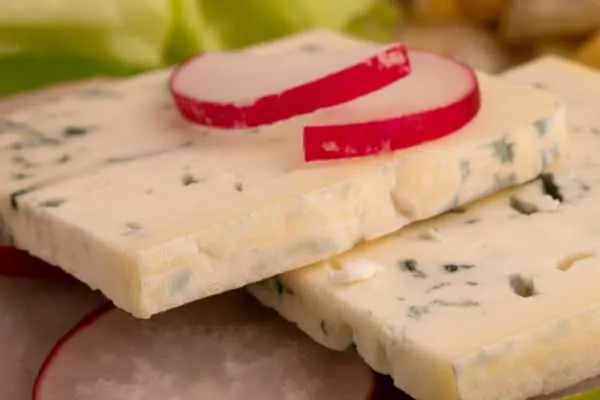
How to Store Blue Cheese
Store your blue cheese in the fridge, and make sure it can breathe so that you don’t suffocate the blue mold in it. Wrap the leftovers using wax paper, cheese wrap, aluminum foil, or reuse the foil your blue cheese comes in.
If you look at how blue cheese is packaged, you’ll notice that whatever wraps the cheese has some tiny holes allowing the cheese to breathe. These perforations are there because the mold in blue cheese requires air to thrive.
After wrapping the cheese, you can place it in a plastic bag or airtight container. Just make sure the cheese has some space to breathe, i.e., you don’t squeeze out all the air from the bag before sealing it.
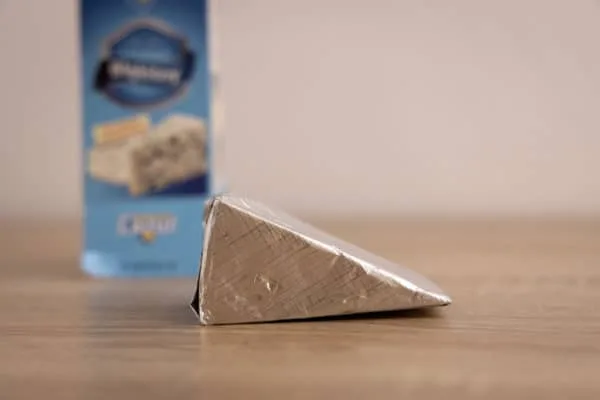
That bag or container also serves other purposes – it helps prevent cross-contamination and odor absorption.
Since the wrap is perforated, blue cheese can easily absorb nearby odors. So if you only wrap it, make sure it doesn’t sit near any smelly products.
Same thing with cross-contamination. If you leave your blue cheese only in its perforated bag, mold spores might infect other nearby foods. That’s how you end up with blue mold growing on your Gouda or parmesan.
As you can tell, storing blue cheese is similar to storing Brie cheese, another moldy cheese.
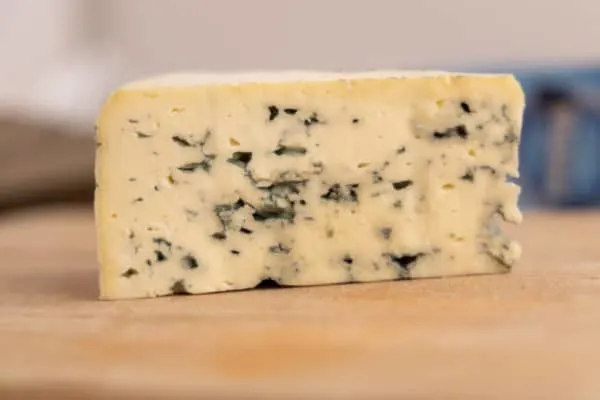
Blue Cheese Shelf Life and Spoilage Summary
Thanks for reading this primer on blue. Here are the takeaways:
- Blue cheese keeps up for up to two weeks beyond the printed date. After opening the wedge, make sure to use it within 7 to 10 days, maybe a bit longer if it’s a fairly fresh block that still has a few weeks until the date on the label.
- Store blue cheese in the fridge, and ensure the leftover cheese can breathe. Either use the foil it often comes in or opt for cheese wrap, wax paper, or aluminum foil. Place the wrapped blue cheese in a freezer bag or airtight container, but don’t squeeze out the extra air.
- Discard blue cheese if there’s unintentional mold growing on the surface, the creamy part has changed color to pink, brown, or yellow, or if it smells strongly off or ammonia-like. You can also toss it for quality purposes if it has hardened, dried out, or the taste is too strong for your liking.
